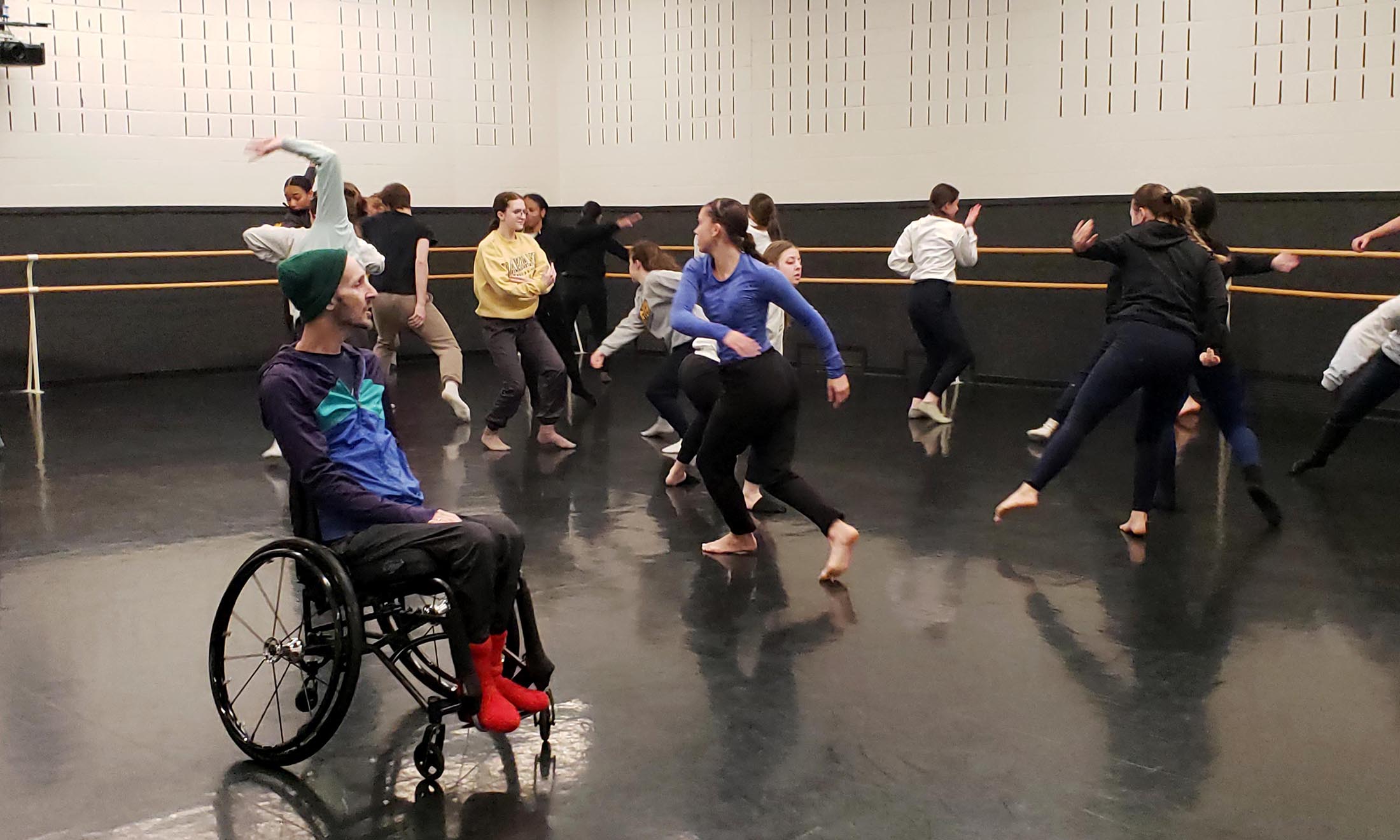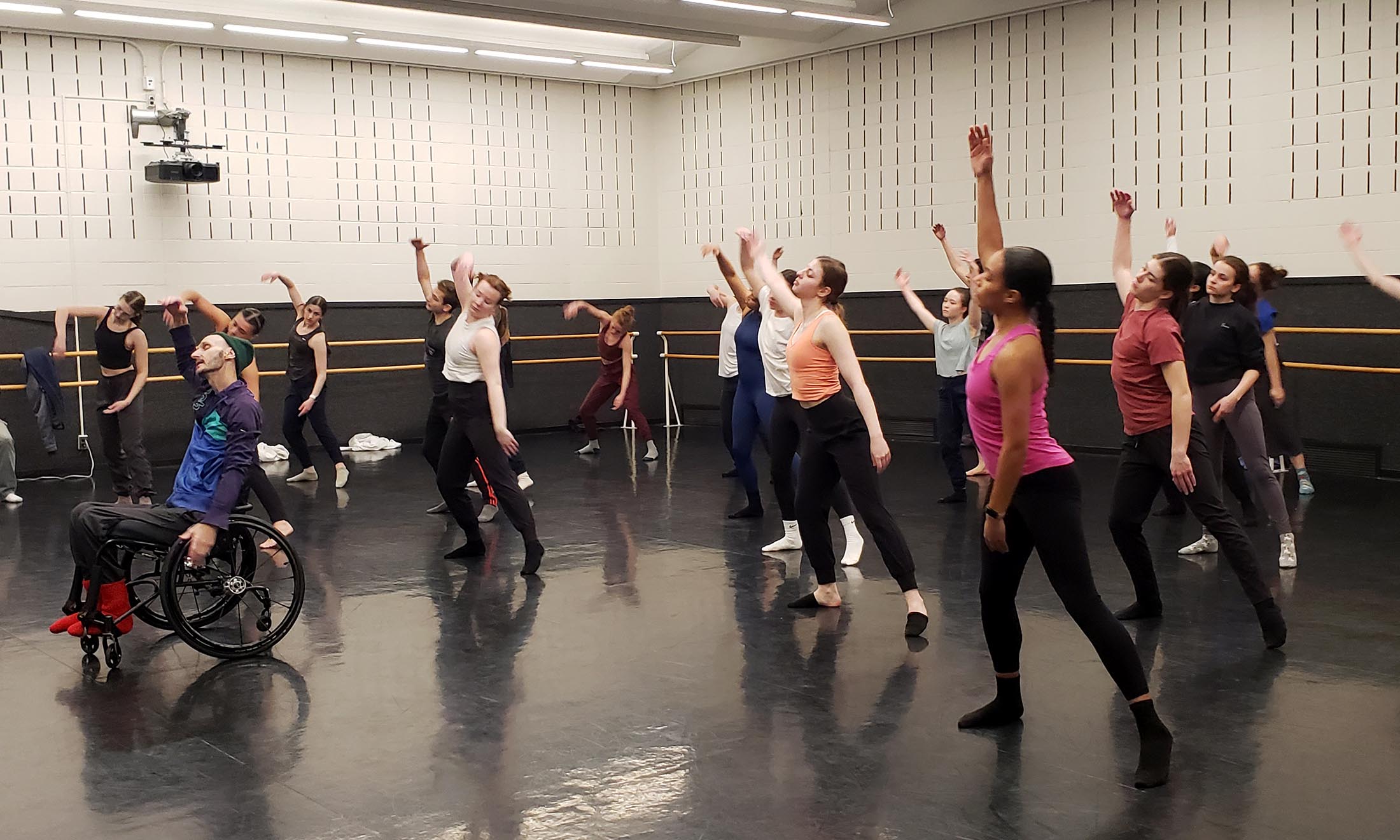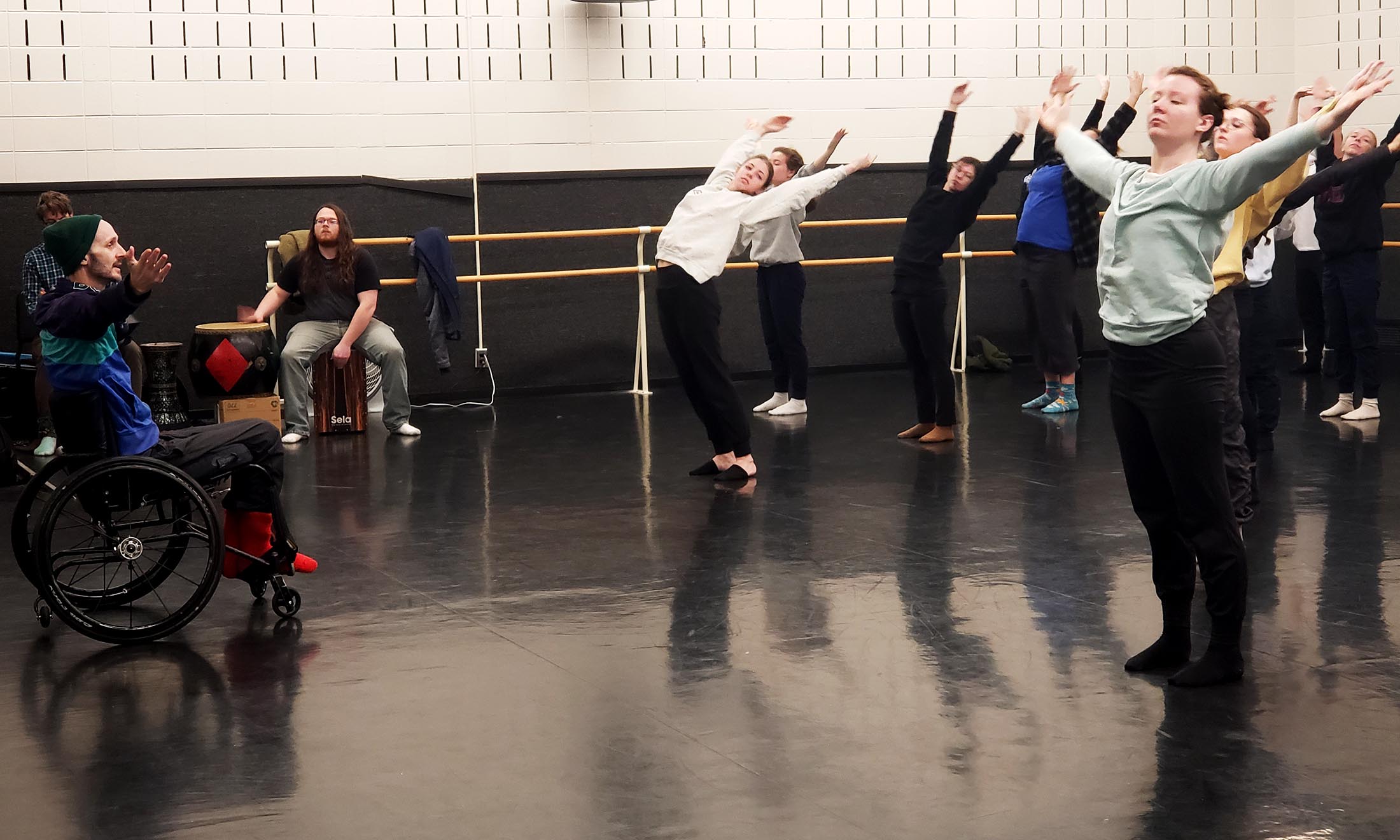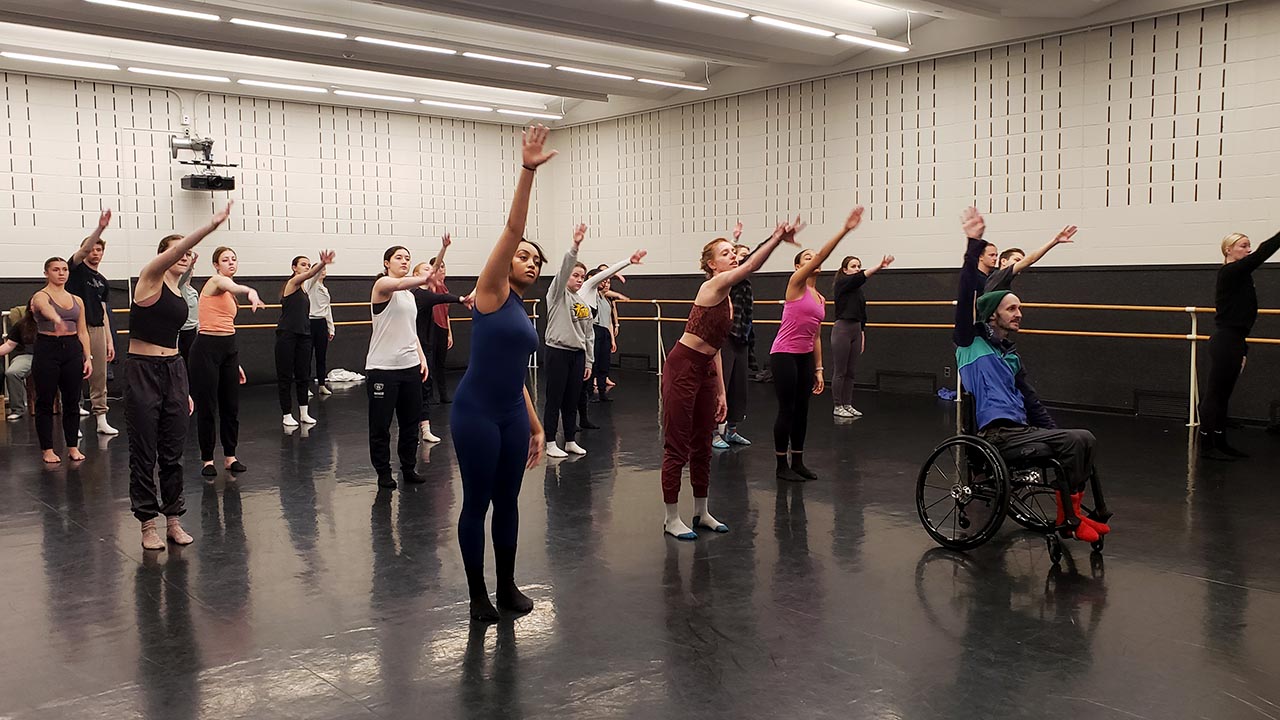- YouTube
- TikTok
Marc Brew, acclaimed disabled choreographer, shares passion for dance with Oakland University students

Acclaimed international disabled choreographer, artistic director and dancer Marc Brew hosted a contemporary Master Class for dance department students at Oakland University on March 15.

Acclaimed international disabled choreographer, artistic director and dancer Marc Brew hosted a contemporary Master Class for dance department students at Oakland University on March 15.

Acclaimed international disabled choreographer, artistic director and dancer Marc Brew hosted a contemporary Master Class for dance department students at Oakland University on March 15.

Acclaimed international disabled choreographer, artistic director and dancer Marc Brew hosted a contemporary Master Class for dance department students at Oakland University on March 15.

Acclaimed international disabled choreographer, artistic director and dancer Marc Brew hosted a contemporary Master Class for dance department students at Oakland University on March 15.

Acclaimed international disabled choreographer, artistic director and dancer Marc Brew hosted a contemporary Master Class for dance department students at Oakland University on Wednesday, March 15.
“It was a great opportunity for a different kind of class,” said OU student Tristen Cook. “Usually, we have guest artists who are able-bodied like we are, so I think this showed us a different kind of perspective that we can learn a lot from.”
Born and raised in Jerilderie, Australia — a rural village with a population of about 900 — Brew discovered his passion for dance at an early age.
“My mom saw that I had a lot of energy, and I used to do a lot of acrobatic stuff in the back yard all the time, so she put me in a dance class,” Brew said. “I gave it up for a while because I was being teased a lot about being a boy and a dancer, but I ended up going back and my dance teacher and one of my school teachers said I should go to an art school and study dance.”
Brew auditioned at two dance schools, one in Melbourne and another in Sydney, and was accepted with scholarships to both. He ultimately chose the school in Melbourne because it was closer to his hometown.
After graduating from school, Brew studied for another three years at the Australian Ballet School, where he also danced with the Australian Ballet. Then he moved to South Africa, where he worked with PACT Ballet Company.
“While I was there, I was involved in a car accident in which I acquired a spinal cord injury, as well as massive internal injuries,” Brew said. “It was definitely a change in circumstances that I didn’t expect – going from being a professional, non-disabled dancer to suddenly being in a hospital bed and being told I’d never walk again.”
Instead of giving up, Brew re-dedicated himself to his passion for dance, despite friends and family urging him to pursue other options.
“In my mind, I was still a dancer,” Brew said. “Just because I suddenly couldn’t move the way I used to didn’t mean I lost my passion for it. I just had to find another way to do it. It was a process because I had been trained very traditionally throughout my career, so I had this idea or perception of how a dancer should be and how they should look, and I didn’t fit that mold anymore.
“I began to question what dance meant to me, and that took me on a journey of exploring dance as a disabled person and creating opportunities for other differently-abled people based on what one can do, rather than what one can’t do.”
Two years after his accident, Brew moved to New York and met ballet dancer Kitty Lunn, who became paraplegic in 1987 after slipping on ice and falling down a flight of stairs.
“Growing up, I had never really been exposed to someone with a disability, at least a visible one,” Brew said “She was the first person I met who was similar to myself. She opened up new possibilities and showed me how to translate techniques onto my body.
“One of the first things I had to learn was to stop looking in the mirror because I was always picturing myself how I thought I should be, rather than how I am or how I was feeling,” he added. “By not looking in the mirror anymore, I really got to focus on how it felt to me.”
In 2003, Brew moved to London in 2003 and performed with Candoco Dance Company, the UK’s largest integrated dance company, until 2008.
Seeking more opportunities to choreograph, Brew founded the Marc Brew Company in 2008 and began getting commissions to create work for dance, theatre, film, and television. Some of his commissions included the San Francisco Ballet School, Dancing Wheels, Scottish Ballet, Ballet Cymru (Wales), YDance (Scotland), AXIS Dance Company (USA), Candoco Dance Company (UK), Touch Compass (NZ), Amy Seiwert’s Imagery (USA), and Scottish Dance Theatre (Scotland).
He also served as artistic director of AXIS Dance Company from 2017 to 2021, and is currently associate artistic director of Ballet Cymru.
“Working with dancers, I do feel a sense of responsibility in terms of representation,” Brew said. “Initially, when I’m working with a new group of people, there’s usually a curiosity that comes from not knowing how it’s going to be. They wonder how I’m going to get this information across to them. There’s this traditional perception of how dance is taught. I use a combination of techniques to communicate my ideas, and I think at the end of the day it opens up peoples’ minds to what’s possible in dance.”
It was Brew’s unique approach to dance that initially caught the eye of OU alumna Stephanie Pizzo, a former special lecturer at OU and artistic director of Eisenhower Dance Detroit.
“When I saw Marc’s choreography with AXIS Dance Company, I was blown away by it and how he used the dancers,” she said. “I knew immediately I wanted to work with him.”
Pizzo said she invited Brew to work with dancers at OU and Eisenhower Dance Detroit because she wanted them to see dance from a different perspective.
“When I bring guest choreographers in, I want my dancers to feel challenged — not only artistically, but in a way that helps them grow as people,” she said. “I think that working with someone like Marc is going to impact them beyond the dance studio, and it will help them see that dance is for everybody; it isn’t just about movement on stage, it’s about movement in our bodies.”
OU dance student Lea Purrett said it was an “amazing” experience to work with Brew.
“I think it’s very important to get different perspectives from different people,” she said. “Having someone like Marc, who is differently-abled, come in was a whole new experience that helped us learn from a different perspective.”
Brew also encouraged the dance students to continue pursuing their passion, and to stay true to who they are, no matter the challenges they face in life.
“It’s important to remember that when one door closes, another opens,” he said. “Being a dancer isn’t an easy world to be in; you need to have that determination and that drive to continue to follow your passion and reach your goals.”


 March 23, 2023
March 23, 2023